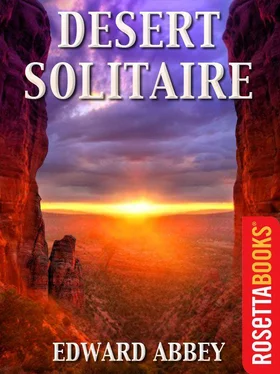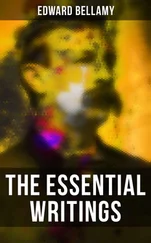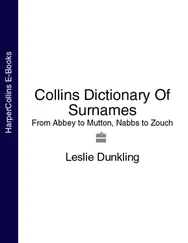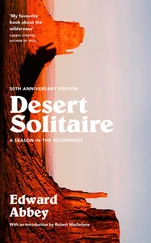Abbey, Edward - Desert Solitaire (Edward Abbey Series )
Здесь есть возможность читать онлайн «Abbey, Edward - Desert Solitaire (Edward Abbey Series )» — ознакомительный отрывок электронной книги совершенно бесплатно, а после прочтения отрывка купить полную версию. В некоторых случаях можно слушать аудио, скачать через торрент в формате fb2 и присутствует краткое содержание. Год выпуска: 2011, Издательство: RosettaBooks, Жанр: Старинная литература, на английском языке. Описание произведения, (предисловие) а так же отзывы посетителей доступны на портале библиотеки ЛибКат.
- Название:Desert Solitaire (Edward Abbey Series )
- Автор:
- Издательство:RosettaBooks
- Жанр:
- Год:2011
- ISBN:нет данных
- Рейтинг книги:4 / 5. Голосов: 1
-
Избранное:Добавить в избранное
- Отзывы:
-
Ваша оценка:
- 80
- 1
- 2
- 3
- 4
- 5
Desert Solitaire (Edward Abbey Series ): краткое содержание, описание и аннотация
Предлагаем к чтению аннотацию, описание, краткое содержание или предисловие (зависит от того, что написал сам автор книги «Desert Solitaire (Edward Abbey Series )»). Если вы не нашли необходимую информацию о книге — напишите в комментариях, мы постараемся отыскать её.
Desert Solitaire (Edward Abbey Series ) — читать онлайн ознакомительный отрывок
Ниже представлен текст книги, разбитый по страницам. Система сохранения места последней прочитанной страницы, позволяет с удобством читать онлайн бесплатно книгу «Desert Solitaire (Edward Abbey Series )», без необходимости каждый раз заново искать на чём Вы остановились. Поставьте закладку, и сможете в любой момент перейти на страницу, на которой закончили чтение.
Интервал:
Закладка:
Long enough in the desert a man like other animals can learn to smell water. Can learn, at least, the smell of things associated with water—the unique and heartening odor of the cottonwood tree, for example, which in the canyonlands is the tree of life. In this wilderness of naked rock burnt to auburn or buff or red by ancient fires there is no vision more pleasing to the eyes and more gratifying to the heart than the translucent acid green (bright gold in autumn) of this venerable tree. It signifies water, and not only water but also shade, in a country where shelter from the sun is sometimes almost as precious as water.
Signifies water, which may or may not be on the surface, visible and available. If you have what is called a survival problem and try to dig for this water during the heat of the day the effort may cost you more in sweat than you will find to drink. A bad deal. Better to wait for nightfall when the cottonwoods and other plants along the streambed will release some of the water which they have absorbed during the day, perhaps enough to allow a potable trickle to rise to the surface of the sand. If the water still does not appear you may then wish to attempt to dig for it. Or you might do better by marching farther up the canyon. Sooner or later you should find a spring or at least a little seep on the canyon wall. On the other hand you could possibly find no water at all, anywhere. The desert is a land of surprises, some of them terrible surprises. Terrible as derived from terror.
When out for a walk carry water; not less than a gallon a day per person.
More surprises. In places you will find clear-flowing streams, such as Salt Creek near Turnbow Cabin, where the water looks beautifully drinkable but tastes like brine.
You might think, beginning to die of thirst, that any water however salty would be better than none at all. Not true. Small doses will not keep you going or alive and a deep drink will force your body to expend water in getting rid of the excess salt. This results in a net loss of bodily moisture and a hastening of the process of dehydration. Dehydration first enervates, then prostrates, then kills.
Nor is blood, your own or a companion’s, any adequate substitute for water; blood is too salty. The same is true of urine.
If it’s your truck or car which has failed you, you’d be advised to tap the radiator, unless it’s full of Prestone. If this resource is not available and water cannot be found in the rocks or under the sand and you find yourself too tired and discouraged to go on, crawl into the shade and wait for help to find you. If no one is looking for you write your will in the sand and let the wind carry your last words and signature east to the borders of Colorado and south to the pillars of Monument Valley—someday, never fear, your bare elegant bones will be discovered and wondered and marveled at.
A great thirst is a great joy when quenched in time. On my first walk down into Havasupai Canyon, which is a branch of the Grand Canyon, never mind exactly where, I took with me only a quart of water, thinking that would be enough for a mere fourteen-mile downhill hike on a warm day in August. At Topocoba on the rim of the canyon the temperature was a tolerable ninety-six degrees but it rose about one degree for each mile on and downward. Like a fool I rationed my water, drank frugally, and could have died of the heatstroke. When late in the afternoon I finally stumbled—sun-dazed, blear-eyed, parched as an old bacon rind—upon that blue stream which flows like a miraculous mirage down the floor of the canyon I was too exhausted to pause and drink soberly from the bank. Dreamily, deliriously, I waded into the waist-deep water and fell on my face. Like a sponge I soaked up moisture through every pore, letting the current bear me along beneath a canopy of overhanging willow trees. I had no fear of drowning in the water—I intended to drink it all.
In the Needles country high above the inaccessible Colorado River there is a small spring hidden at the heart of a maze of fearfully arid grabens and crevasses. A very small spring: the water oozes from the grasp of moss to fall one drop at a time, one drop per second, over a lip of stone. One afternoon in June I squatted there for an hour—two hours? three?—filling my canteen. No other water within miles, the local gnat population fought me for every drop. To keep them out of the canteen I had to place a handkerchief over the opening as I filled it. Then they attacked my eyes, drawn irresistibly by the liquid shine of the human eyeball. Embittered little bastards. Never have I tasted better water.
Other springs, more surprises. Northeast of Moab in a region of gargoyles and hobgoblins, a landscape left over from the late Jurassic, is a peculiar little waterhole named Onion Spring. A few wild onions grow in the vicinity but more striking, in season, is the golden princess plume, an indicator of selenium, a mild poison often found in association with uranium, a poison not so mild. Approaching the spring you notice a sulfurous stink in the air though the water itself, neither warm nor cold, looks clear and drinkable.
Unlike most desert waterholes you will find around Onion Spring few traces of animal life. Nobody comes to drink. The reason is the very good one that the water of Onion Spring contains not only sulfur, and perhaps selenium, but also arsenic. When I was there I looked at the water and smelled it and ran my hands through it and after a while, since the sampling of desert water is in my line, I tasted it, carefully, and spat it out. Afterwards I rinsed my mouth with water from my canteen.
This poison spring is quite clear. The water is sterile, lifeless. There are no bugs, which in itself is a warning sign, in case the smell were not sufficient. When in doubt about drinking from an unknown spring look for life. If the water is scummed with algae, crawling with worms, grubs, larvae, spiders and liver flukes, be reassured, drink hearty, you’ll get nothing worse than dysentery. But if it appears innocent and pure, beware. Onion Spring wears such a deceitful guise. Out of a tangle of poison-tolerant weeds the water drips into a basin of mud and sand, flows from there over sandstone and carries its potent solutions into the otherwise harmless waters of the creek.
There are a number of springs similar to this one in the American desert. Badwater pool in Death Valley, for example. And a few others in the canyonlands, usually in or below the Moenkopi and Shinarump formations—mudstone and shales. The prospector Vernon Pick found a poison spring at the source of the well-named Dirty Devil River, when he was searching for uranium over in the San Rafael Swell a few years ago. At the time he needed water; he had to have water; and in order to get a decent drink he made something like a colander out of his canteen, punching it full of nail holes, filling it with charcoal from his campfire and straining the water through the charcoal. How much this purified the water he had no means of measuring but he drank it anyway and although it made him sick he survived, and is still alive today to tell about it.
There are rumors that when dying of the thirst you can save your soul and body by extracting water from the barrel cactus. This is a dubious proposition and I don’t know anyone who has made the experiment. It might be possible in the Sonoran desert where the barrel cactus grows tall as a man and fat as a keg of beer. In Utah, however, its nearest relative stands no more than a foot high and bristles with needles curved like fishhooks. To get even close to this devilish vegetable you need leather gloves and a machete. Slice off the top and you find inside not water but only the green pulpy core of the living plant. Carving the core into manageable chunks you might be able to wring a few drops of bitter liquid into your cup. The labor and the exasperation will make you sweat, will cost you dearly.
Читать дальшеИнтервал:
Закладка:
Похожие книги на «Desert Solitaire (Edward Abbey Series )»
Представляем Вашему вниманию похожие книги на «Desert Solitaire (Edward Abbey Series )» списком для выбора. Мы отобрали схожую по названию и смыслу литературу в надежде предоставить читателям больше вариантов отыскать новые, интересные, ещё непрочитанные произведения.
Обсуждение, отзывы о книге «Desert Solitaire (Edward Abbey Series )» и просто собственные мнения читателей. Оставьте ваши комментарии, напишите, что Вы думаете о произведении, его смысле или главных героях. Укажите что конкретно понравилось, а что нет, и почему Вы так считаете.












